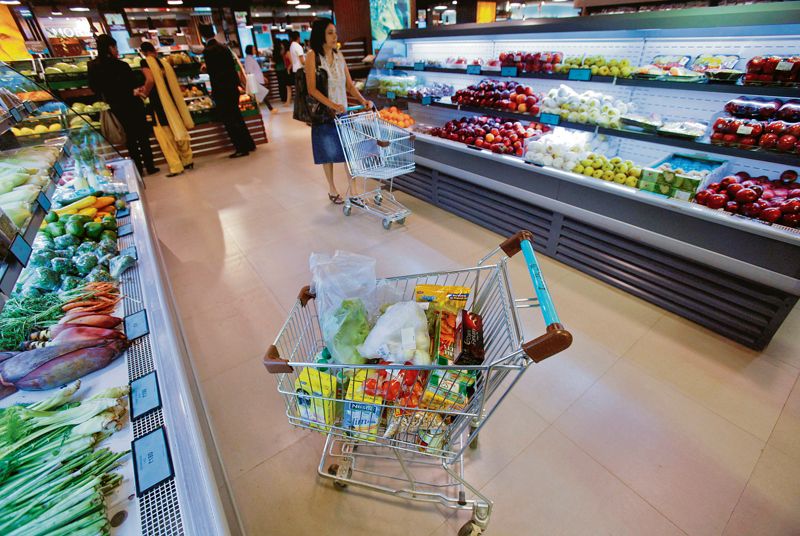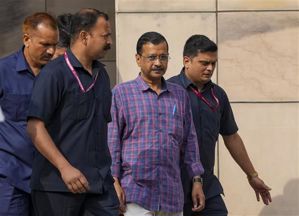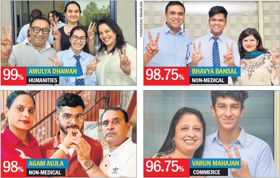
ANAEMIC: Post pandemic, spending on essential items has remained muted. Reuters
Senior Economic Analyst
IN the new financial year, India is contemplating growth prospects which are stable but do not give rise to a gung-ho mood. This is because there are several downside risks which have to be countered while relying on the inherent strengths which have enabled India to become the fastest-growing major economy in the world. In the government’s own words, “downside risks… dominate upside risks.”
The government has reiterated its expectation that the economy will grow by 6.5 per cent, even as the IMF’s latest World Economic Outlook has lowered its forecast for the current year by 20 basis points to 5.9 per cent. The World Bank, on the other hand, has come up with a slightly better figure of 6.3 per cent.
The reasons behind the optimism being guarded are manifold. Foremost is that the downside facing the global economy remains powerful, with the World Economic Outlook foreseeing global growth to touch 3 per cent, which is a small improvement on the 2.8 per cent clocked in 2023.
A key reason for the global growth prospects being lacklustre is the way the oil prices are going. The OPEC has cut production, which has caused oil prices to rise in April from the lows that prevailed in the previous month. So long as the Ukraine war continues, global commodity prices will remain volatile, with oil prices not going down below a point because of OPEC’s manipulation of output.
The second source of headwinds from the rest of the world is the financial crisis that has gripped major developed economies after the collapse of Silicon Valley Bank in the US and the resultant turmoil engulfing Credit Suisse, requiring it to be taken over. This turmoil will continue to impede the smooth flow of foreign investment into the country. Things will not be helped by US policy rates remaining high and offering an incentive to investors to earn good returns from government bonds instead of taking a risk and investing in emerging economies.
But despite these headwinds from across the seas, the biggest uncertainty and risk facing the economy lies within the country itself — the uncertainty over the monsoon prospects. Severe heatwaves have already hit the country, ratcheting up vegetable prices. Food prices are also high and there is no knowing where they will go if the monsoon fails. Going by the record of the last few years, the time is ripe for El Nino to strike, doing its bid to send the monsoon haywire.
With the global economy offering no help and agriculture threatening to let the economy down, all eyes are focused on what the manufacturing and services are able to deliver. Till now, public sector investment in infrastructure has carried the can of delivering demand, but it cannot be expected to continue the journey by itself. The government is laying great store by private sector investment picking up and delivering the impetus needed to promote judicious economic growth.
Private sector investment has become all the more crucial as private consumption expenditure has, till now, failed to deliver. Be it in housing, automobiles, two-wheelers or mobile phones, the top end of markets are seeing a robust demand, with the rest of the market remaining distinctly anaemic. As a result, in the post-pandemic period, discretionary spends have emerged powerfully, but spending on the essential consumption basket has remained muted. This has been reflected in FMCG companies continuing to have to live with anaemic rural demand and sales volumes stagnating. Consumers are trading down to be able to buy what they cannot do without.
Other than anaemic consumption expenditure by most residents, what has added to the woes of the private sector is the prevailing high interest rates offered by financial institutions. They have been prompted to do so by the RBI pushing up regulatory rates in order to rein in inflation, which remains significantly above the targeted 4 per cent. There can hardly be any incentive to borrow money at high interest rates in order to shore up capital expenditure, particularly when the demand for most items of mass consumption remains subdued.
In this situation, what are the options left in the hands of the country’s policymakers so that there is minimal downside risk to achieving the projected growth rate of 6.5 per cent and, maybe, improve upon it a little? Foremost, the K-shaped recovery that has taken place after the pandemic has waned, causing a disproportionate amount of additional income to flow into the hands of the top few, has to be remedied. The bottom half of the population must have more to spend so that the rural demand for essentials perks up and the FMCG managers have a broad smile on their faces.
There is a need for income support to the poor to continue and, this is important, the rural employment guarantee scheme needs to be made to function better. Besides, small and medium enterprises need to be able to access more working capital in order to expand operations. Schemes introduced by financial institutions at the behest of the government to aid post-pandemic recovery need to continue and become more accessible. A business which does not have an agency rating should, nevertheless, be able to get more working capital without excessive hassle.
As small and medium enterprises expand operations with more working capital, they will hire more temporary hands, which will allow their families to spend more on essentials. Over time, this will transmit demand upwards to the corporate sector, improve its capacity utilisation and signal it to ready its expansion plans. As these get off the ground, private capital expenditure will increase and give the economy the boost that public investment on the infrastructure has till now given.
There is also an urgent need to improve the ease of doing business for large-scale high-tech manufacturers who are seeking to shift base from China to India. The production-linked incentive (PLI) scheme is being approved for more and more sectors and a constant vigil needs to be maintained to address the specific issues being faced by its participants. The PLI has meant more rules and a range of higher import tariffs to enable its participants to deliver. There has to be a sunset for the scheme so that, at the end of the day, Indian manufacturing is able to face competition both at home and globally and thrive.
Join Whatsapp Channel of The Tribune for latest updates.




























